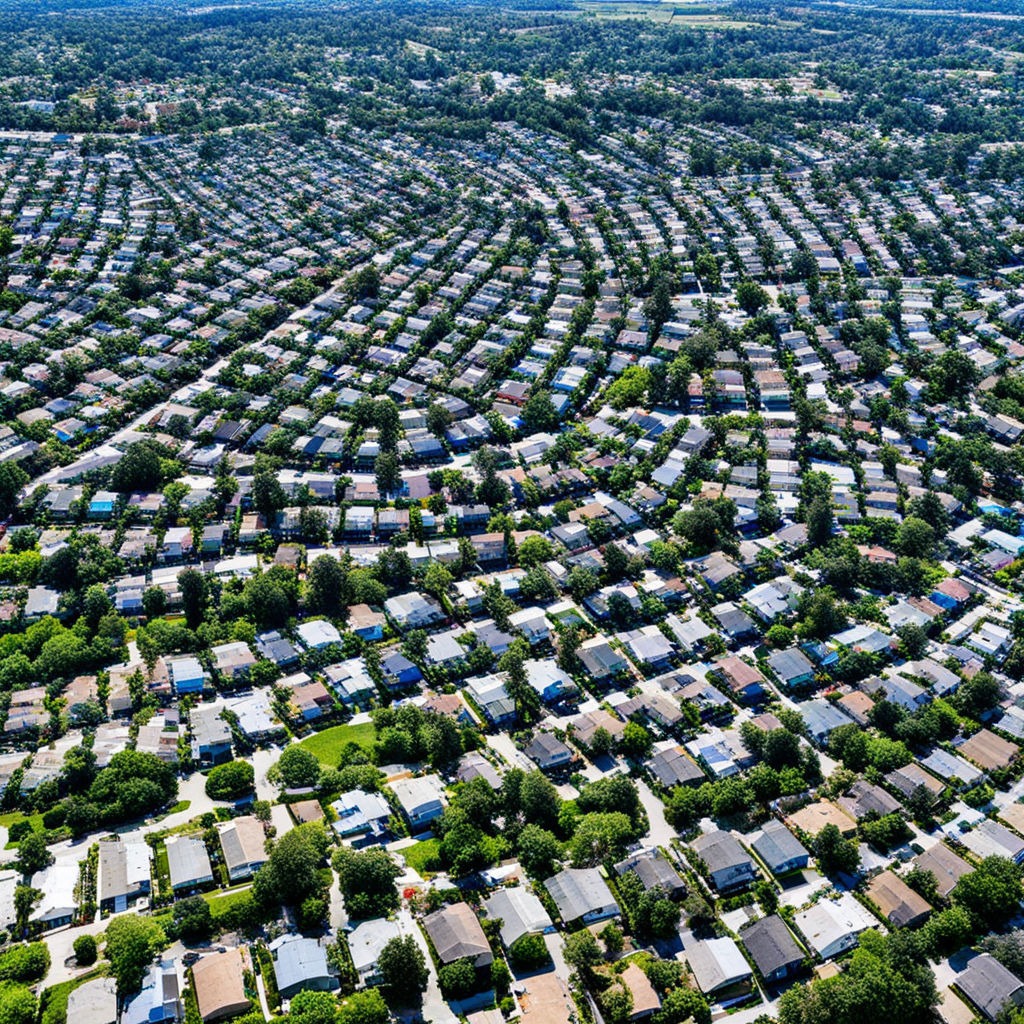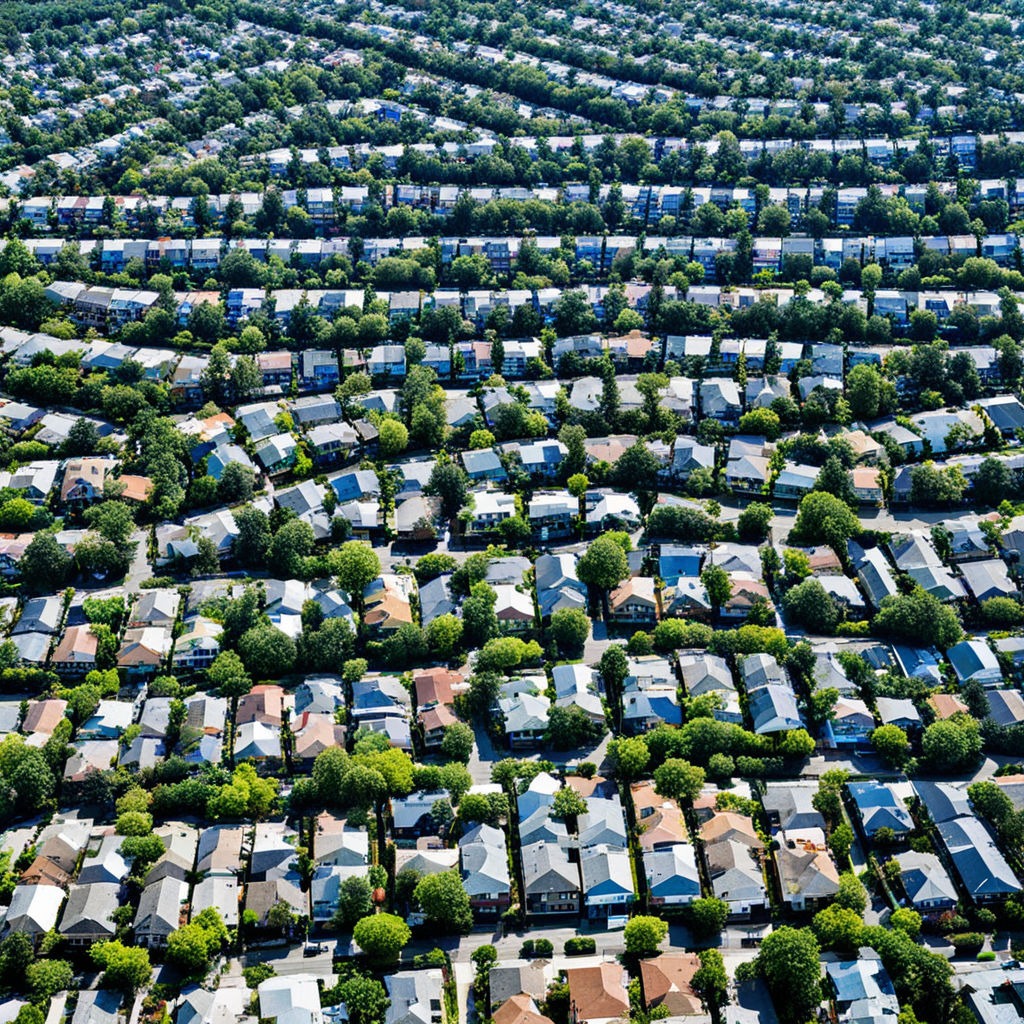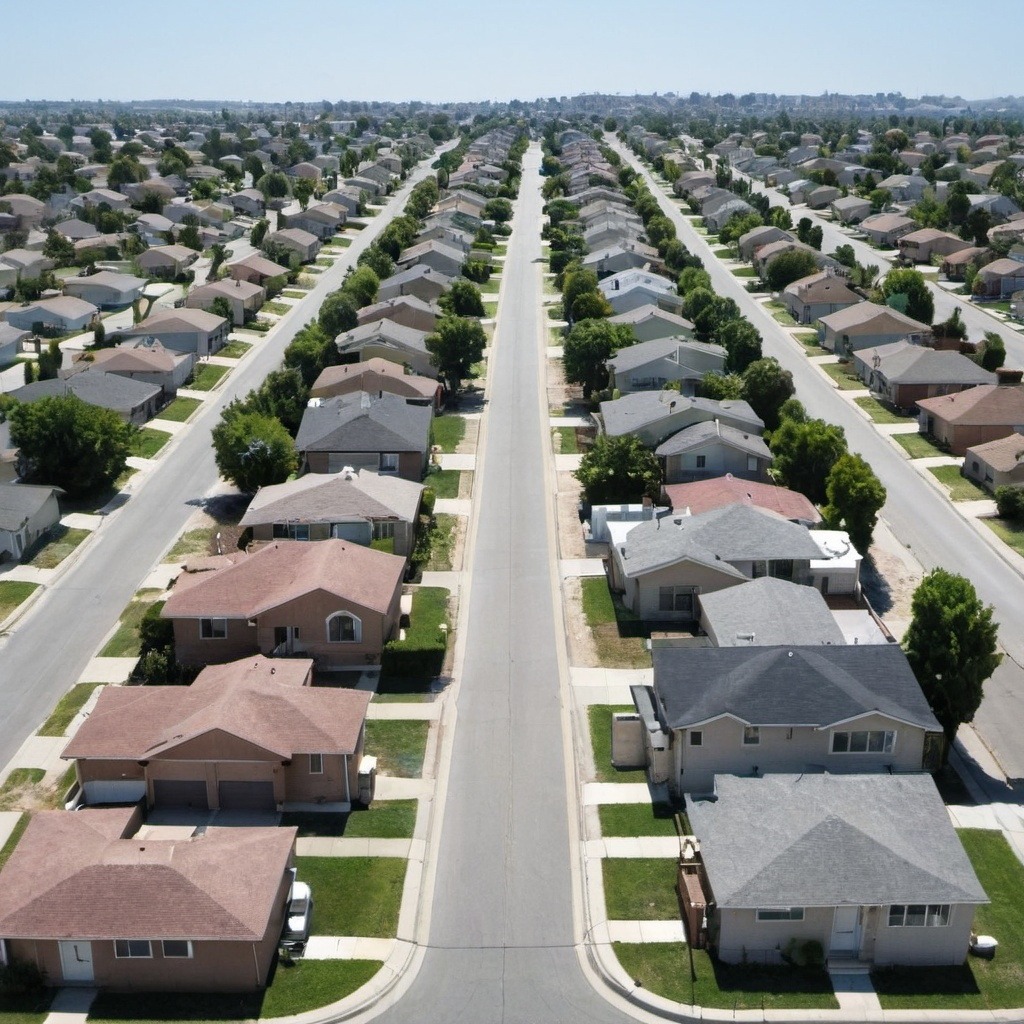
Introduction
Neighborhood safety is more than just a peaceful environment—it’s about creating a space where everyone feels secure and protected. A safe neighborhood fosters a sense of belonging and trust among residents, which is essential for a thriving community. By focusing on crime prevention strategies and encouraging open communication, we can ensure that our neighborhoods remain welcoming and secure for everyone.
A supportive community is the backbone of neighborhood safety. When neighbors look out for each other and engage in community activities, the risk of crime significantly decreases. This collective effort not only enhances safety but also strengthens the bonds between residents, creating a close-knit, resilient community. Learn more about the benefits of community engagement and how it contributes to a safer neighborhood.
Common Safety Concerns in Neighborhoods
Neighborhoods across the country face a variety of safety challenges. Among the most prevalent are rising crime rates, traffic hazards, and poorly lit public spaces. These issues can lead to increased anxiety among residents and diminish the overall sense of security within the community.
The Impact of Crime and Traffic on Neighborhood Safety
Crime, particularly property crimes like burglary and theft, remains a significant concern in many areas. According to the FBI’s Uniform Crime Reporting (UCR) Program, these crimes continue to affect neighborhoods nationwide. Additionally, traffic-related dangers, including speeding and frequent accidents, pose serious risks, especially in neighborhoods with heavy pedestrian activity.
The Importance of Proactive Solutions
Case studies from various cities demonstrate the effectiveness of addressing these concerns through proactive measures. For example, communities that have implemented traffic calming measures or established neighborhood watch programs have seen significant reductions in both crime and traffic incidents. These examples highlight the importance of taking action to improve safety and protect the well-being of all residents.
The Impact of a Close-Knit Community on Safety
A strong, close-knit community is one of the most effective tools in enhancing neighborhood safety. When neighbors know and trust each other, they are more likely to watch out for one another, report suspicious activities, and work together to maintain a safe environment. This sense of solidarity not only deters crime but also fosters a feeling of security and belonging among residents.
Community Programs and Initiatives to Enhance Security
To further bolster neighborhood safety, many communities have implemented various programs and initiatives. One of the most successful is the Neighborhood Watch program, where residents collaborate to monitor their surroundings and communicate with local law enforcement. This program not only helps reduce crime rates but also strengthens the connections between neighbors.
Other initiatives, such as community safety meetings and local online forums, provide platforms for residents to share concerns, discuss potential threats, and brainstorm solutions.
These efforts ensure that everyone is informed and engaged in maintaining the safety of their neighborhood, creating a unified front against any challenges that may arise.
Enhancing Lighting Around Homes and Streets
One of the most impactful ways to improve neighborhood safety is by enhancing lighting around homes and streets. Adequate lighting deters criminal activity by making it difficult for potential intruders to go unnoticed. Homeowners can start by installing motion-activated lights or strategically placed outdoor fixtures that illuminate entry points and dark corners around their property. Additionally, collaborating with local authorities to ensure that streetlights are functioning properly, or even advocating for additional lighting in poorly lit areas, can significantly improve the overall safety of the neighborhood.
Installing Security Systems and Cameras
Incorporating security systems and cameras into your home’s safety plan is another effective measure. Modern security systems are not only more advanced but also more accessible and affordable than ever before. Installing a comprehensive security system, which may include alarms, sensors, and cameras, provides an added layer of protection. Visible security cameras act as a strong deterrent to would-be criminals, who are less likely to target homes under surveillance. Moreover, many systems now offer remote monitoring, allowing residents to check in on their homes via smartphone apps, ensuring peace of mind even when away.
Fostering a Culture of Vigilance Among Neighbors
While physical security measures are important, building a culture of vigilance and mutual care among neighbors is equally crucial. Encouraging regular communication among residents about any suspicious activities or concerns helps create a network of watchful eyes. Informal agreements among neighbors to keep an eye on each other’s properties, especially when someone is away, can significantly reduce the risk of crime. Regular community meetings, social gatherings, or even online neighborhood groups can strengthen these connections, fostering a supportive environment where everyone is invested in the safety and well-being of the community.
Leveraging Technology for Neighborhood Security
In today’s digital age, technology plays a pivotal role in enhancing neighborhood security. Modern tech solutions provide residents with tools to stay connected, report issues, and collaborate with local authorities to ensure a safer environment. One of the most effective technologies is the use of apps designed specifically for public safety, such as SaferWatch. These apps allow residents to report suspicious activities directly to the police department, ensuring that issues are addressed promptly. By providing real-time alerts and updates, these platforms help keep everyone informed and aware of potential threats in their community.
In addition to safety-specific apps, online community forums and social media platforms have become invaluable resources for neighborhood security. Platforms like Nextdoor and Facebook groups enable residents to share information about local events, report concerns, and stay connected with their neighbors. These online spaces also offer a way for communities to collaborate with local law enforcement and public safety officials, creating a direct line of communication that can be critical in preventing crime. For instance, police departments often use social media to share updates on crime trends, issue warnings about offenders in the area, and provide safety tips.
Social media, in particular, has transformed the way neighborhoods stay informed. By following local law enforcement agencies, public safety organizations, and community leaders, residents can receive timely updates and alerts. This immediate access to information empowers residents to take action quickly, whether that means avoiding a dangerous area or reporting suspicious behavior. The ability to directly communicate with others in the community also fosters a stronger sense of unity and collective responsibility, which is essential for maintaining a safe neighborhood.
Embracing these modern technologies not only enhances the security of individual homes but also strengthens the overall safety of the community. By leveraging tools like SaferWatch, participating in online forums, and staying active on social media, residents can create a well-informed, vigilant community where everyone plays a part in keeping the neighborhood safe.
The Power of Collaboration with Local Authorities
Collaboration with local law enforcement is a cornerstone of effective neighborhood safety. When residents and police departments work together, they create a more robust security network that benefits everyone. This partnership allows for better communication, quicker response times, and a stronger sense of trust between the community and those sworn to protect it.
The importance of this collaboration cannot be overstated. Local law enforcement agencies have the resources, expertise, and authority to address crime and safety issues, but they rely on the community’s eyes and ears to stay informed about what’s happening on the ground. By establishing a direct line of communication with police departments, neighborhoods can ensure that their concerns are heard and addressed promptly. Regular meetings, community events, and public safety forums are excellent ways to facilitate this dialogue and keep everyone on the same page.
There are numerous examples of successful partnerships between neighborhoods and police departments. One such example is the Neighborhood Watch Program, where residents collaborate with local law enforcement to monitor their community and report any suspicious activities. This program has been highly effective in reducing crime rates and increasing residents’ sense of security. In many cities, police departments have also established community policing initiatives, where officers are assigned to specific neighborhoods to build relationships with residents and address issues proactively. These officers often attend community meetings, participate in local events, and work closely with residents to develop tailored safety strategies.
Another successful collaboration can be seen in the use of crime mapping tools provided by local authorities. These tools, often available online, allow residents to track criminal activity in their area, helping them stay informed and take preventive measures. Police departments that share this data with the public empower communities to be more vigilant and involved in their own safety.
Promoting a Safe Environment for Children and Seniors
Promoting a safe environment for vulnerable populations, particularly children and seniors, is a fundamental aspect of neighborhood safety. These groups are often the most at risk due to their limited ability to protect themselves, making it crucial for communities to take extra measures to ensure their security. Implementing specific safety strategies tailored to the needs of children and seniors not only enhances their well-being but also contributes to the overall sense of safety and trust within the community.
For children, one of the primary concerns is their safety during outdoor activities. Ensuring that neighborhoods have well-maintained and clearly designated safe zones, such as parks, playgrounds, and recreational areas, is essential. These areas should be equipped with proper fencing, clear signage, and ideally, should be located away from busy roads to reduce the risk of traffic-related accidents. Furthermore, the presence of responsible adults, whether through organized supervision or community volunteers, can significantly reduce the risk of accidents or other safety incidents. Communities can organize patrols or rotating shifts of supervision, where parents or other volunteers take turns overseeing the activities in these zones, ensuring that children are always under watchful eyes.
Beyond physical safety in outdoor spaces, it is equally important to educate children about personal safety. This includes teaching them about the dangers of interacting with strangers, the importance of staying within designated safe areas, and how to seek help if they ever feel threatened. Schools and community centers can play a vital role in this education, offering workshops or safety drills that equip children with the knowledge and skills they need to protect themselves. Additionally, parents should be encouraged to have open and ongoing conversations with their children about safety, reinforcing these lessons at home.
For seniors, the challenges are somewhat different but no less critical. Older adults may face mobility issues, cognitive decline, or other health-related concerns that make them more vulnerable to accidents or crime. To address these challenges, it is important to ensure that homes and public spaces are designed with accessibility and safety in mind. Installing handrails, ramps, and non-slip surfaces in homes and community areas can help prevent falls, which are a leading cause of injury among seniors. In neighborhoods, creating well-lit, accessible pathways that are free of obstacles can significantly reduce the risk of accidents for elderly residents who enjoy walking or spending time outdoors.
In addition to physical modifications, fostering a strong support network is crucial for senior safety. Neighbors can play a key role by checking in regularly with elderly residents, offering assistance with tasks that may be challenging, such as grocery shopping, home maintenance, or transportation. Community programs that pair seniors with younger volunteers for companionship and help with errands can also enhance their sense of security and belonging. Furthermore, encouraging seniors to participate in community activities and social groups can reduce the risk of isolation, which is often linked to increased vulnerability to crime or health issues.
Creating a neighborhood that prioritizes the safety of children and seniors also involves broader community planning. Safe zones, such as parks and recreational areas, should be designed with these vulnerable populations in mind. This means including features like shaded seating areas for seniors, play equipment that is age-appropriate and regularly inspected for safety, and ensuring that these areas are easily accessible from all parts of the neighborhood. Additionally, communities should advocate for pedestrian-friendly infrastructure, such as crosswalks with adequate signal times, speed bumps, and signage to alert drivers to the presence of children and seniors.
Moreover, collaboration with local law enforcement and emergency services is essential to create a secure environment. Regular patrols, quick response times, and community engagement by police can help deter crime and ensure that any incidents involving vulnerable populations are dealt with swiftly and effectively. Neighborhoods can also benefit from organizing safety workshops or first aid training sessions, tailored specifically for the needs of children and seniors, which can be conducted in collaboration with local safety professionals.

Conclusion
Neighborhood safety is not just about reducing crime rates; it’s about creating a secure and welcoming environment where every resident feels a sense of belonging and protection. As we’ve explored, the safety of a community relies on the collective efforts of its residents, local authorities, and dedicated organizations like The Office of Neighborhood Safety. By staying informed, implementing practical safety measures, and fostering strong connections with one another, communities can significantly impact local crime statistics and create a safer environment for all.
Each individual has the agency to contribute to their neighborhood’s safety, whether by improving their home’s security, participating in local initiatives, or simply being a vigilant and caring neighbor. The power of a united community cannot be overstated; when residents come together with a shared commitment to safety, they create a resilient network that can effectively deter crime and respond to potential threats.
Now is the time to take action. Whether it’s joining an existing neighborhood watch program or starting a new initiative in your community, your involvement can make a significant difference. By collaborating with local law enforcement and fellow residents, you can help lower the crime rate and ensure that your neighborhood remains a safe, supportive place for everyone. Don’t wait—take the first step today and become an active participant in your community’s security efforts. Together, we can build safer, stronger neighborhoods.
